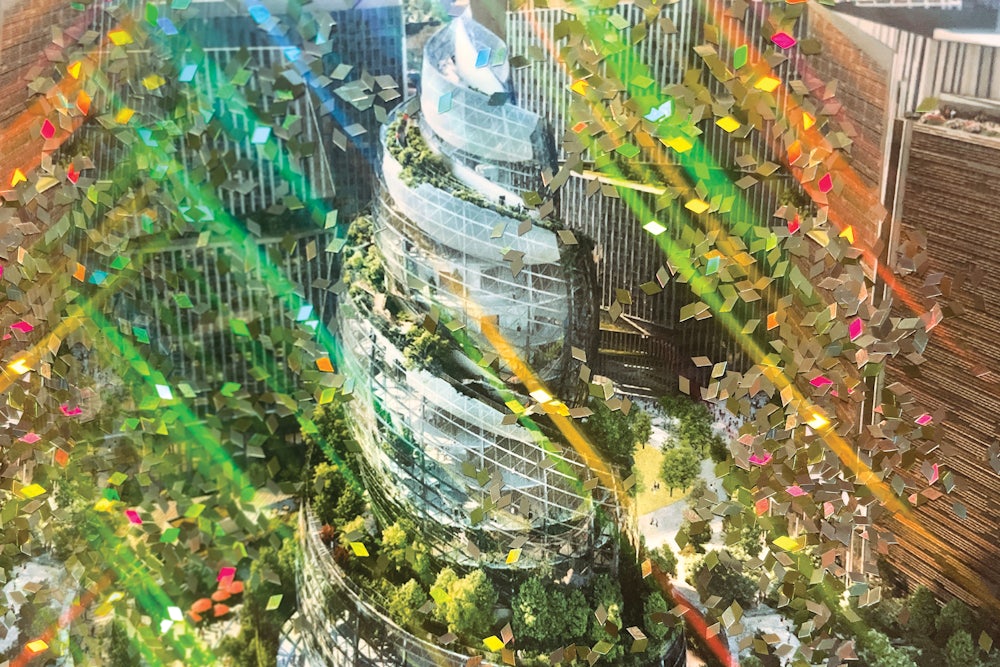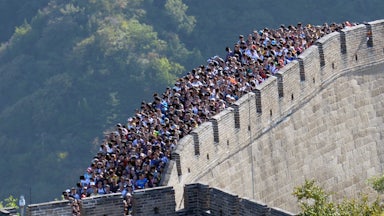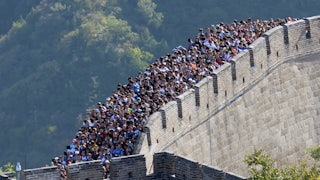In early February, Amazon released plans for its new corporate campus in Arlington, Virginia. The preliminary renderings show several generic glass office buildings clustered around a spire called “the Helix”—an indoor park that will loom 350 feet over Northern Virginia like a giant, twisted strand of DNA. Amazon is presenting the Helix as a companion structure to “the Spheres,” the indoor gardens at its Seattle headquarters. But as a space of consumption and leisure, the Helix actually resembles a lot of classic starchitecture. It is a towering, glass-clad, tree-dotted bauble. The press release announcing its construction comes littered with all the rhetorical bells and whistles of contemporary architecture: The building was designed to foster a sense of community engagement; it will also be sustainable, infusing “nature into the urban landscape” with “lush gardens and flourishing trees native to the region.”
Although Amazon claims to be integrating nature and the community, the Helix, like the Spheres, is not a public park. It is not even a public space in the common sense of the word, because access is strictly and privately controlled. It exists for Amazon employees, and will only be opened to the public for guided tours on select weekends. In that sense, the Helix embodies much of the cynicism of both public relations and architecture. It is a “landmark” that is closed off, isolated, and policed—an architectural testament to corporate power. Like the Vessel, the honeycomb structure at the heart of Manhattan’s luxury megadevelopment Hudson Yards, it masks the complete takeover of a swath of the city and its commons behind an attractive trinket, whose true function is to serve as a site of Instagrammable consumption and free advertising.
The core concept is an old one, called “privately owned public space.” In 1961, New York City offered developers additional square footage if they agreed to make common space accessible to the public, and “privately owned public spaces” sprung up all over the city. Today, they range from walkways to atria to parks. Developers have also promised to include public space in glittering building projects like Hudson Yards or Sunnyside Yard in Queens, New York, in an attempt to drum up goodwill with the community. Some of the public spaces they promised turned out to be highly policed. When the Vessel, for instance, was open to the public, visitors had to sign waivers acknowledging that they might be searched or filmed while there.
This strange, blurred line between private and public has become a fixture of tech campuses. Facebook has promised to build a grocery store and pharmacy, a hotel, and a “town square” with bike paths and a dog park to serve the community around its Willow Campus in Menlo Park, California. Alphabet’s (thankfully failed) redevelopment project, Sidewalk Toronto, would have included parks, plazas, open spaces, and a redeveloped riverfront. (The project fell through after the public learned that the company would be filming and analyzing traffic flow in what amounted to a massive, Orwellian data-collection scheme.) Alphabet subsidiary Google has since continued its development plans in other cities, including New York, where the tech giant is redeveloping Pier 57 with a public market, science center, and rooftop garden.
Amazon, for its part, will claim up to $750 million in subsidies from the commonwealth of Virginia, promising to bring thousands of jobs and build a campus that will enrich the local community. But aside from 2.5 acres of outdoor green space (a rare concession by Amazon’s corporate overlords), most of the campus will remain under lock and key. The truth is, Amazon’s goal is not to be of the city, but to be the city—to control the commons and the land it sits on. The Helix serves as a convenient distraction, greenwashing the fact that Amazon and its massive logistics empire, which spews CO2 into the air, are anything but sustainable. It, quite simply, exists to say “we are a good company”—even though Amazon is notorious for the hellish conditions in its endless, faceless warehouses, whose invisible architecture is so different from the glittering spire of the Helix, and yet, so much more essential to Jeff Bezos’s world-conquering vision.








